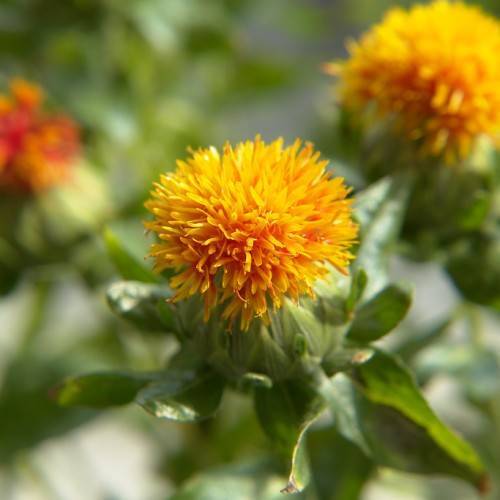
Safflower
Carthamus tinctorius
Watering:
Average
Hardiness Zone:
Flowers:
Flowers
Sun:
full sun,part shade
Fruits:
Fruits Ready In
Leaf:
Yes
Growth Rate:
Low
Drought Tolerant:
Yes
Salt Tolerant:
Yes
Care Level:
Medium
watering
Short-Stemmed Sedge (Carex zikae) plants should be watered on a regular basis, preferably in the morning or late afternoon so that the foliage has a chance to dry during the day. They prefer soils that are consistently moist but not waterlogged, so aim to water as soon as the soil begins to become dry. Generally, this will be around once a week during the growing season, but it is best to inspect the soil regularly in order to determine actual watering needs. If the soil is unusually dry, you may need to water more frequently or more generously. It is also important to water the plants at the base of the plant rather than the leaves.
sunlight
Short-Stemmed Sedge (Carex zikae) prefers partial to full sunlight each day for optimal growth. The sun's rays should reach the plant for at least 6 to 8 hours of the day, depending on the season and climate. It should be noted that in some climates, too much direct sunlight in the summer months may cause the plant to become scorched and can damage the foliage. During the spring and summer months, the sunlight should reach the plant during the mid to late morning, then again in the late afternoon before the sun sets. During the colder winter months, the plant will benefit from more direct sunlight, like earlier in the morning or late afternoon.
pruning
Short-Stemmed Sedge (Carex zikae) should be pruned once or twice per year. For the first pruning, it is advised to prune the plant in early spring, when new growth is first visible. This will help to maintain its desirable shape and compact growth habit. During the second pruning in midsummer, it is best to cut back the foliage to maintain a tidy appearance and encourage healthy new growth. When pruning Carex zikae, take care to use sharp pruners so you don’t damage the plant’s foliage or stems. Cutting back the foliage should only be done to the desired height. Depending on your desired look, it is usually best to leave approximately 4-6 inches of foliage on the stems to maintain the attractive shape of the plant.
